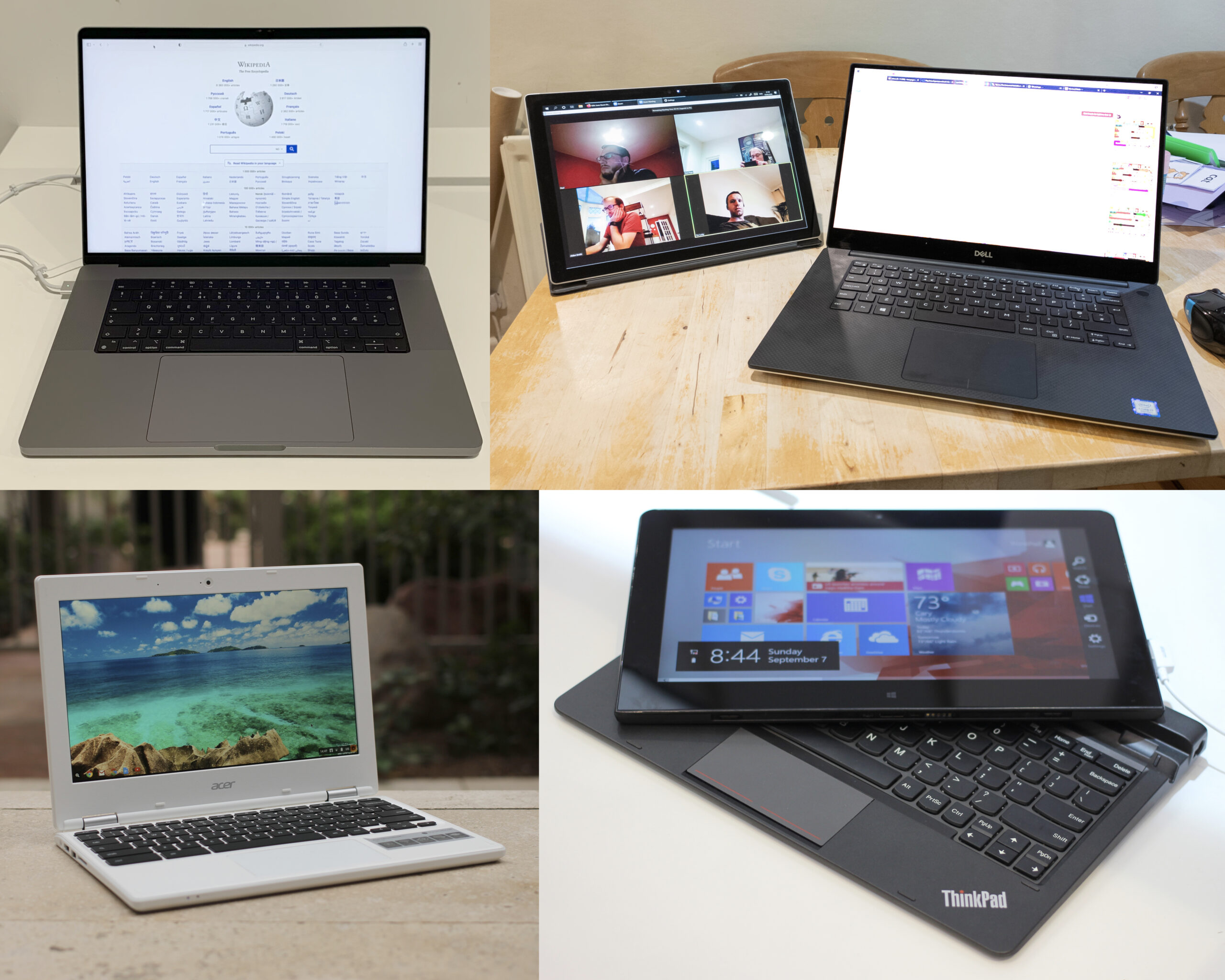A flickering screen followed by a sudden blackout is a panicking situation for any laptop user. Indeed, the incident is more likely to happen with Windows laptops with LCD and LED displays. Reportedly, the issue doesn’t disappear on its own.
If you suffer from the same infuriating problem then laptop repair dubai professionals cover you with some proven fixes. Now, you can try the solutions mentioned below and see if you can restore the laptop’s screen to a flawless one.
11 Fixes for a Laptop Screen that flickers and Turns Black
Lots of reasons might trigger your laptop screen to flicker and turn black. According to laptop repair Dubai technicians, the following causes are more common for such screen problems:
- Outdated version of the operating system
- Improper screen refresh rate or resolution settings
- Damaged or loose cable connections
- Defective graphics card
- Faulty screen
- Overheating
- Corrupt graphics card
- Virus or malware
It’s better if you can diagnose the problem and the underlying reason. Then, you can directly jump to the required solution. Otherwise, you can continue applying the following fixes one by one and see which one eliminates the screen distress. Let’s get started.
1. Inspect Whether the Task Manager Window Flickers Too
Does your laptop display flicker only when you open up some specific programs? Let’s find out whether your laptop’s screen flickers due to an installed application or not. Well, you can access Task Manager on your Windows device and notice if the window flickers as well.
Laptop repair services Dubai experts instruct that you need to press the following keys together: Ctrl, Shift, and Esc. This key shortcut will directly open up the Task Manager window. Now, check if the Task Manager window is flickering.
If not, then the problem is likely to originate from an installed application software. Otherwise, the problem can be triggered by outdated display drivers.
2. See Cables and Connections
Chances are that your computer connections are faulty or loose and that’s why the screen keeps flickering. Before you dive into complicated solutions, laptop repair Dubai professionals recommend checking cable connections and mending them if you pair an external monitor.
For example, here’s what you can consider for your laptop:
- Unplug your video cables from the laptop and reconnect them to the device. Make sure you connect those cables tightly to the system. It applies to VGA, DVI, HDMI, and Displayport cables.
- If the flickering screen trouble doesn’t go away then you can replace the existing cable with a working one.
- Test your external monitor by plugging it into a different computer. If the problem persists, then the external monitor is to be blamed. In that situation, you should try a different monitor if available.
3. Detach Unnecessary Peripherals from the Laptop
During the boot time, plugged-in accessories to your laptop can cause trouble. Moreover, screen problems such as consistent flickering and blank displays are very common because of interfering hardware components.
Indeed, a laptop repair service in Dubai confirms that your system can start behaving weirdly if it detects a connection with a defective or incompatible device. To rule out the chance, you can unplug all the unnecessary accessories from your computer.
What should you remove from your computer, by the way? For example, you can consider the following peripherals to be unplugged from your device:
- USB connections
- External hard drives
- VR headsets or other headphones
- Wi-Fi antennas
On the other hand, you can try detaching additional RAM sticks, sound cards, etc. from your desktop computer. However, you can keep the charger, mouse, and keyboard plugged into your laptop.
4. Update Your Laptop’s Display Driver
Outdated display drivers are incompatible with the latest application updates. If your laptop has outdated display drivers then flickering and black screen problems are quite common. A laptop repair near me recommends updating display drivers in Safe Mode. here’s what you need to follow:
- Click the Windows icon from the Taskbar and choose the gear icon or Settings.
- Once the Settings window opens up, navigate to Update & Security and click on it.
- Afterwards, choose Recovery from the left panel.
- Then, head towards the Advanced Startup option and opt for Restart Now.
- You can see multiple options for enabling Safe Mode. Among them, go for ‘Enable Safe Mode with Networking’.
- After your Windows PC reboots in Safe Mode, search for ‘device manager’. Choose Device Manager from the search results.
- Now, click the option called Display Adapters to expand it. Also, right-click the desired adapter and choose ‘Uninstall Device’.
- Make sure you select the ‘Delete the driver software’ option followed by Uninstall.
Restart the system. After it reboots, you can follow the path: Settings → Update & Security → Windows Update. Finally, click on ‘Check for Updates’ and your computer must start downloading and installing all the required drivers and other updates.
5. Modify Screen Refresh Rate
Are you still dealing with a non-stop flickering screen along with frequent blackouts? A laptop repair service near me suggests adjusting the current screen refresh rate. So, you can try out this hack and see if it makes any improvement in your laptop usage experience.
Let’s have a look at the required steps on a Windows laptop:
- Press the Windows + I key shortcut and you should notice the Settings page.
- Now, click the System category and hit the Display option.
- After that, locate the Advanced Display Settings option.
- Choose a higher, lower, or compatible screen refresh rate.
Now, check if the screen flickering issue has disappeared.
6. Scan for Malware
Believe it or not, the presence of a virus or malware can make your laptop screen flicker. Indeed, the virus can force too many applications to run in the background and your laptop can go all-black within seconds.
So, a laptop repair in Dubai advises scanning for malware on your system. Use the Windows Defender Firewall utility from the Settings menu on your PC. Ensure you opt for a full scan to be on the safe side. However, the scan can take minutes to complete and show the affected files.
On the other hand, you can install a dedicated antivirus or antimalware program. Then, you can run a full scan. However, the software must be trusted and genuine. Otherwise, your computer’s security can be at stake.
7. Deactivate GPU Acceleration
Hardware-accelerated GPU scheduling option can be a wreck on your system settings and capacity, as confirmed by a laptop repair near me. Consequently, your laptop screen might start flickering or even become blank if that specific feature puts extra pressure on your device.
To be on the safe side, you can disable the GPU acceleration and here’s the procedure to do so:
- Enter Settings on your Windows PC and select the System panel.
- Next, choose Display from the left pane.
- Thereafter, scroll down to the lowest part of the page. Then, locate the Graphics Settings option and click on it.
- Look for Hardware-accelerated GPU Scheduling and deactivate it.
Your laptop may not be fixed right away. Instead, give it a restart and see if the laptop screen still flickers and then blacks out.
8. Try a Windows Repair
Does your PC boot to a black screen and you can’t see anything? Laptop Repair Dubai services are quite optimistic that a Windows Repair can restore your device. Well, Windows Repair is a set of diagnostic utilities and more tools that are already integrated into the operating system.
Let’s see how you can launch the Windows Repair or more precisely, the Windows Startup Automatic Repair menu:
- You need to restart your laptop multiple times and your PC will automatically enter the Windows Startup Automatic Repair screen.
- Now, click the Restart option.
- Check if the black screen issue gets fixed. Otherwise, keep restarting your PC and choose Advanced options.
- Next, select System Restore from the screen named ‘advanced options’.
- Choose a convenient system restore point as soon as the System Restore page opens up. For better results, pick a system restore point from the period when your PC didn’t have the flickering or black screen problem.
- Select the Next option and wait for the system to restore all the required files.
After booting into a system restore point, test if the issue has been resolved. However, your computer needs a bootable drive if the Windows Startup Automatic Repair utility doesn’t work.
9. Put a Stop to Automatic Startup Items
Too many startup applications during the boot timing can cause your laptop to flicker and turn into a black display. Hence, laptop repair services Dubai professionals ask you t disable all the unnecessary startup applications.
Here’s what you need to follow to disable automatic programs on startup:
- Access Task Manager using the Ctrl + Shift + Esc key combination. If your system doesn’t allow you to enter Task Manager, consider booting to Safe Mode first and then, navigate to the window.
- Once you open Task Manager, click on the Startup tab and make sure you disable every single entity.
- Reboot your device and see if your laptop screen still flickers.
Disabling complex and resource-draining applications at startup will help you avoid screen issues.
10. Switch to Another Screen
Have you connected your laptop to an external monitor or just a VR headset? Then, you can switch to another screen and see if the display trauma disappears. To switch between screens, a laptop repair near me recommends using the Windows + P key shortcut.
A prompt will show up including all the available display mode options. However, the following options are available to pick from:
- PC Screen Only
- Duplicate
- Extend
- Second Screen Only
Otherwise, you can connect to a wireless display by following the on-screen instructions.
11. Update Specific Applications on your Laptop
Reportedly, third-party apps can make your laptop screen flicker if they are outdated. Indeed, a laptop repair service near me confirms that the following applications and their outdated versions can create a nuisance with the screen:
- iCloud
- Norton AV
- IDT Audio etc.
Update such applications on your laptop. On the other hand, you might notice that the screen starts flickering whenever you open up a particular application. So, update that application and see if it works. Otherwise, you can uninstall them from your system and reinstall them from a trusted source.
A corrupted installation can lead to screen flicker and sudden blackouts, as well. Make sure you update or reinstall the specific application from the legitimate website.
Summing Up…
Depending on your Windows laptop manufacturer, you can try a BIOS or UEFI reset. Practically, this is the last option you have while looking for effective DIY solutions for a flickering display. If that last resort doesn’t help you recover from a flickering and black screen then you should seek professional assistance. So, contact a reliable laptop repair Dubai shop and fix your device.



